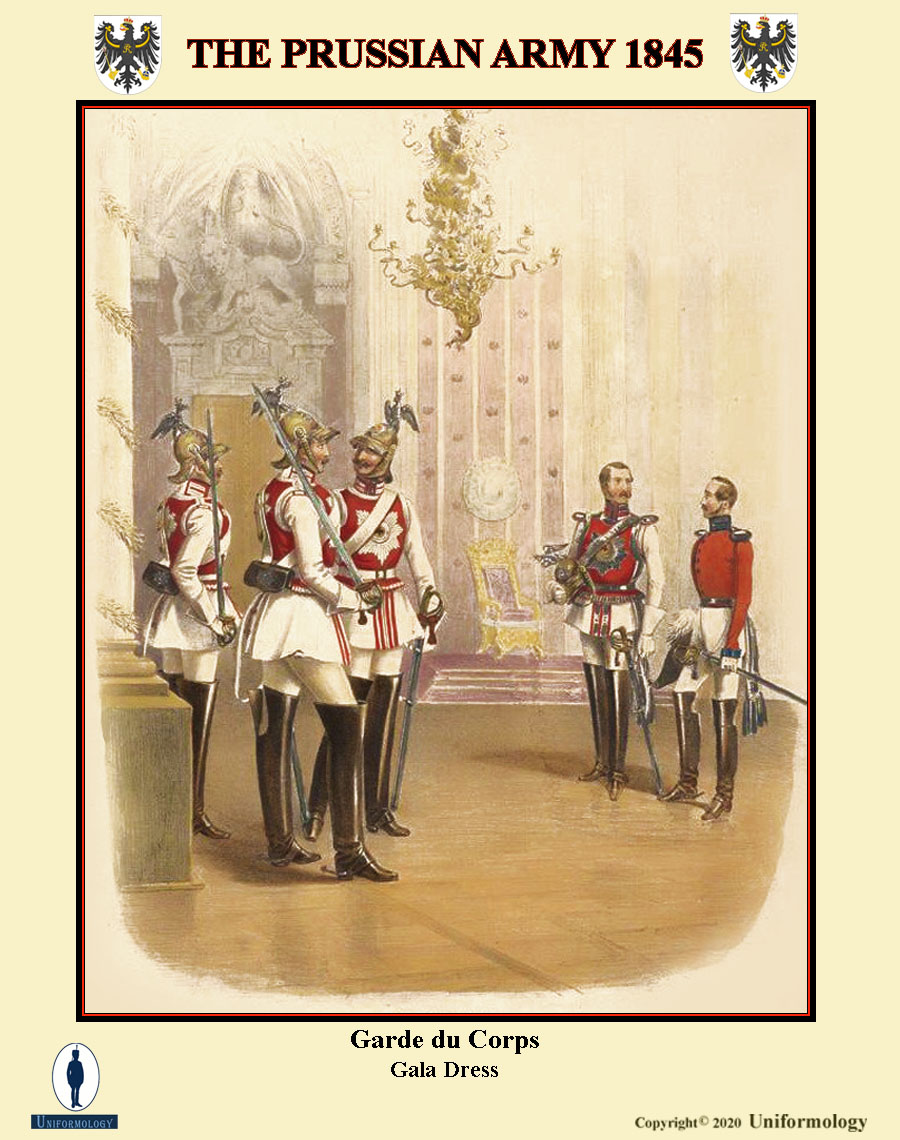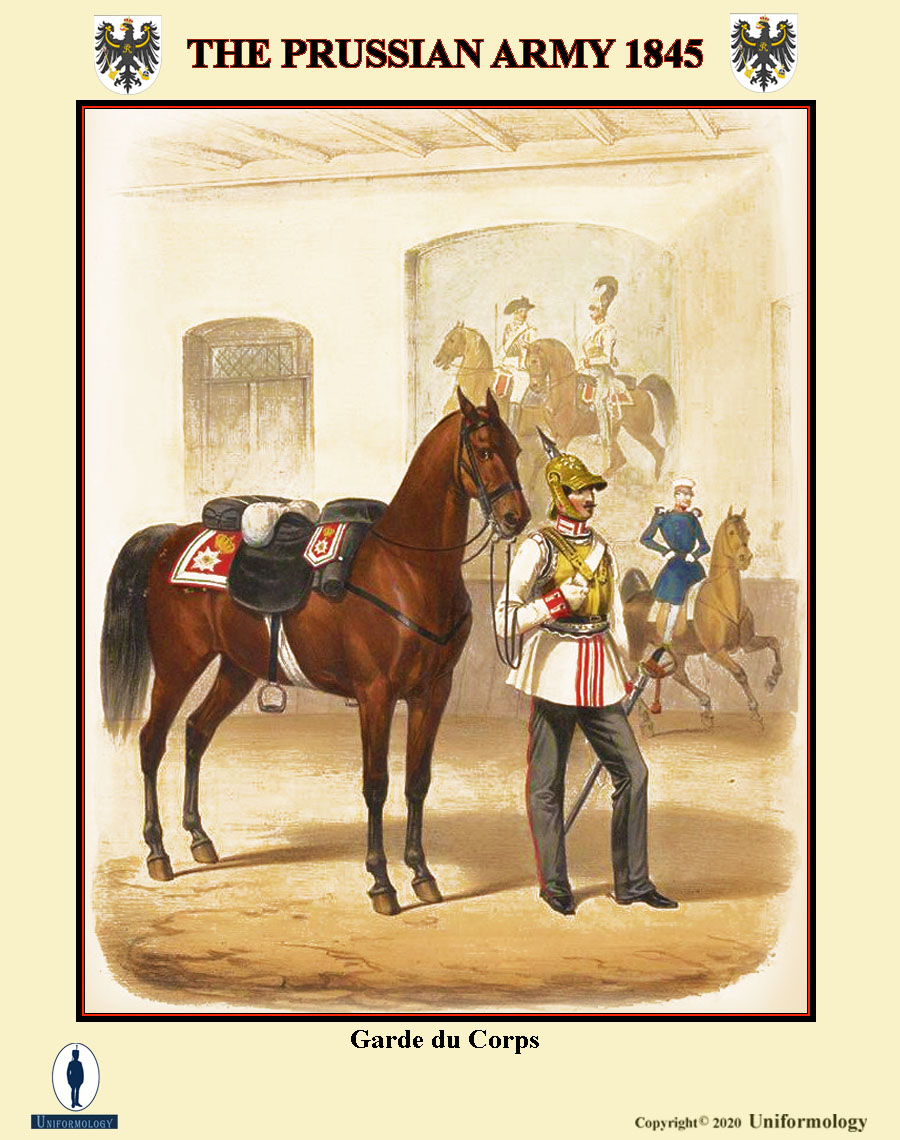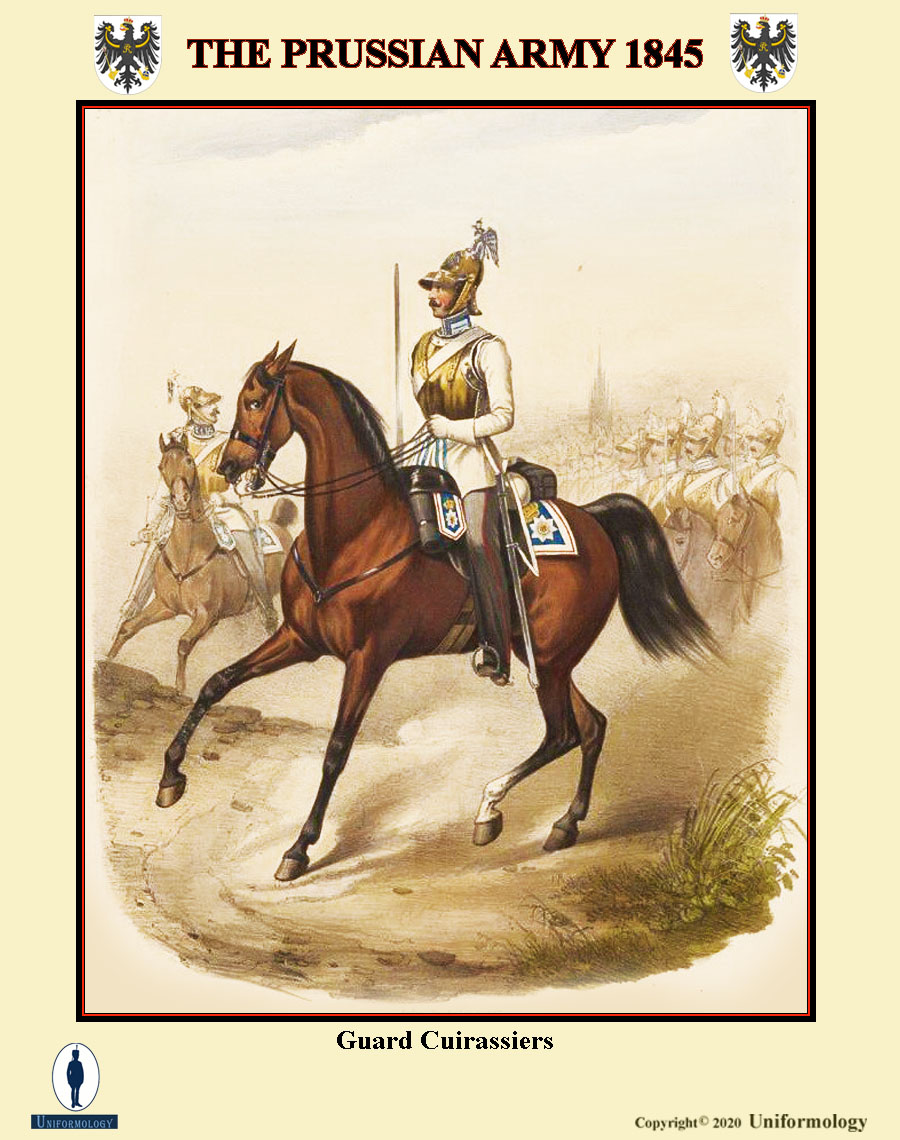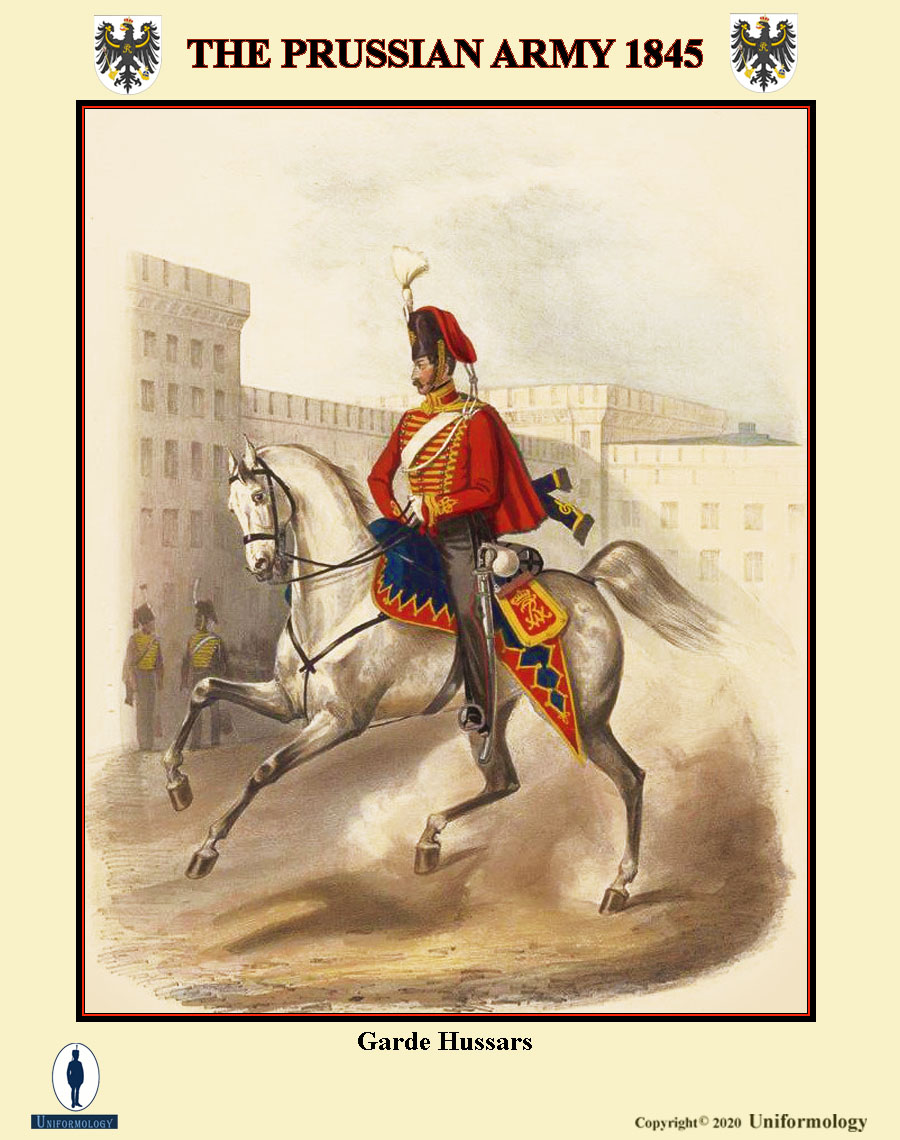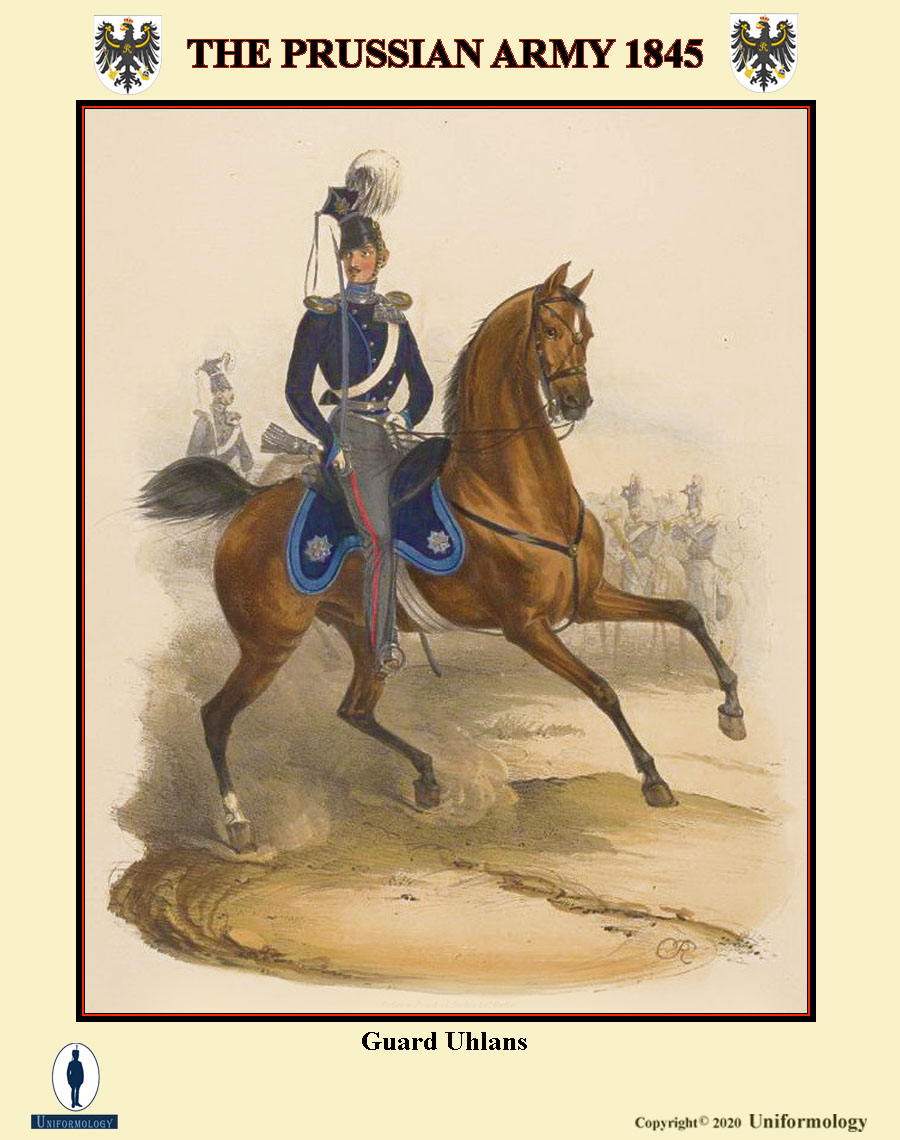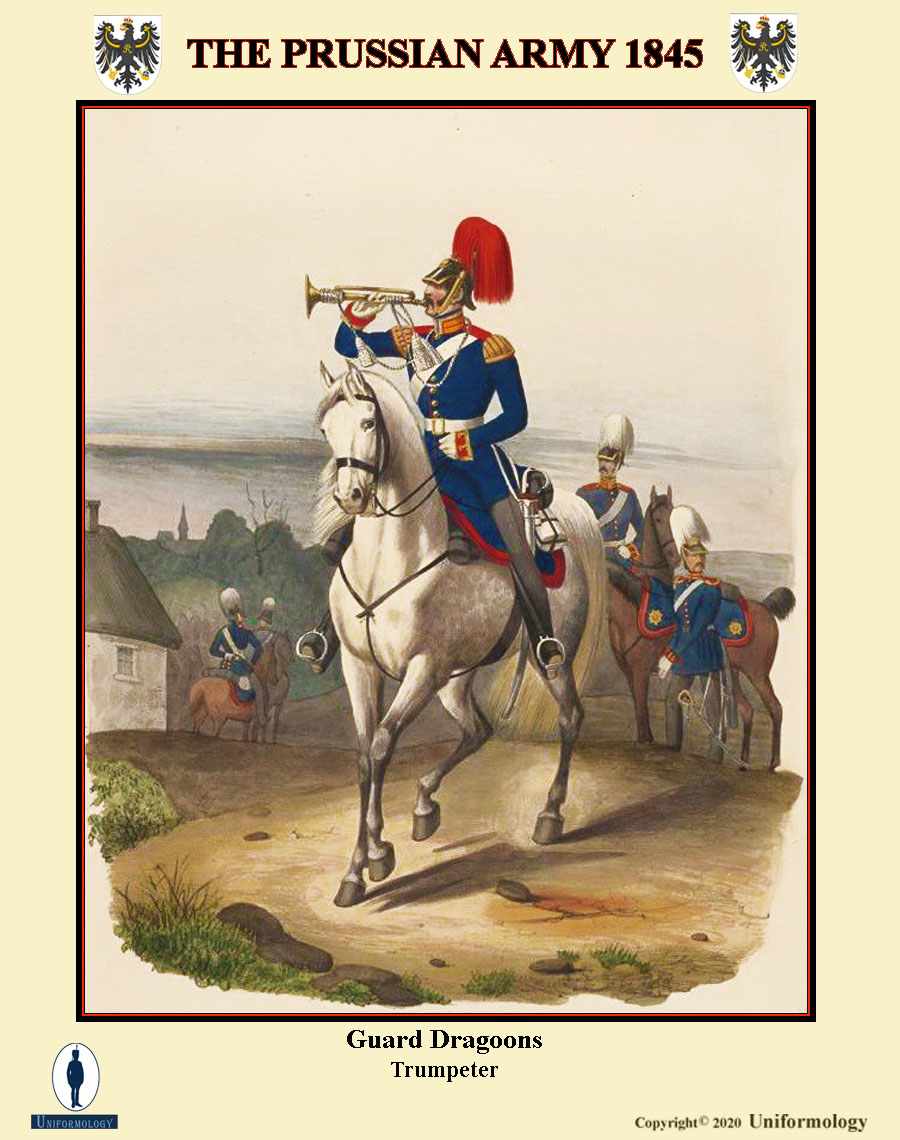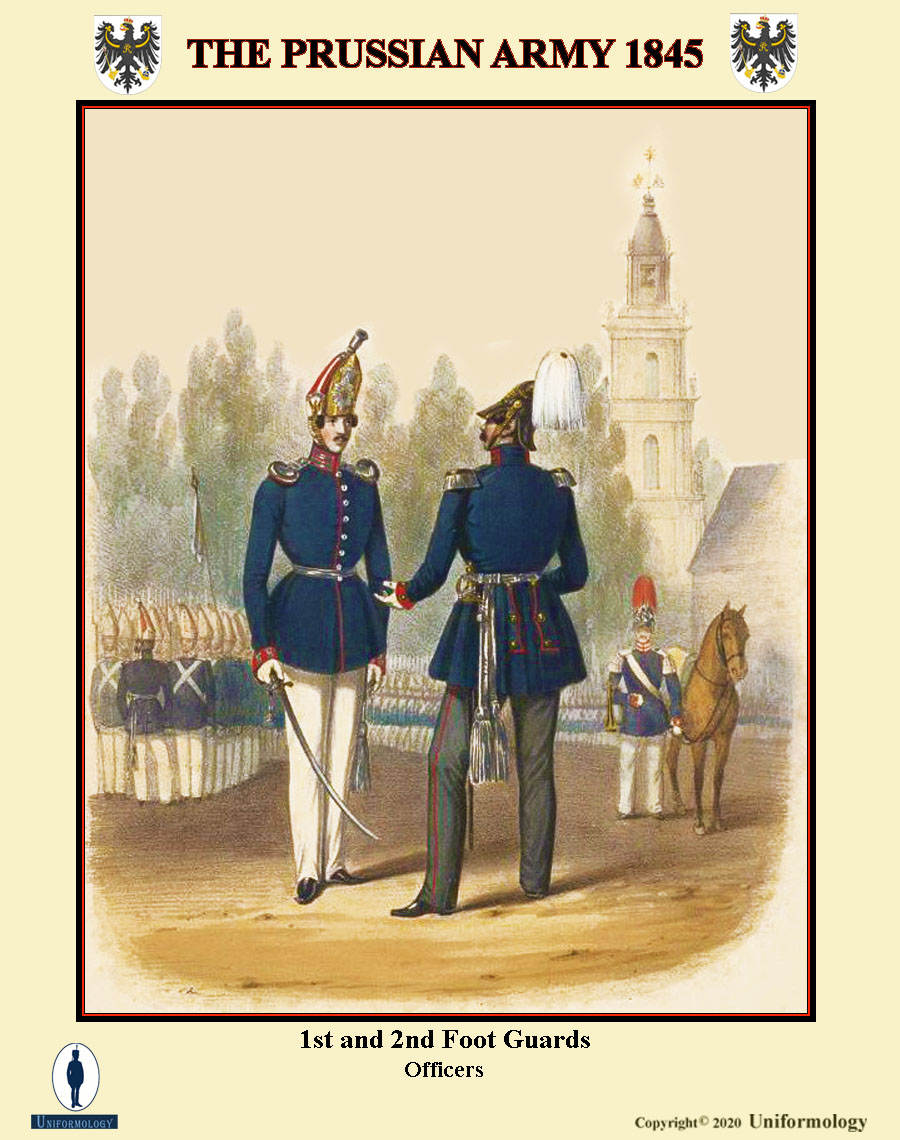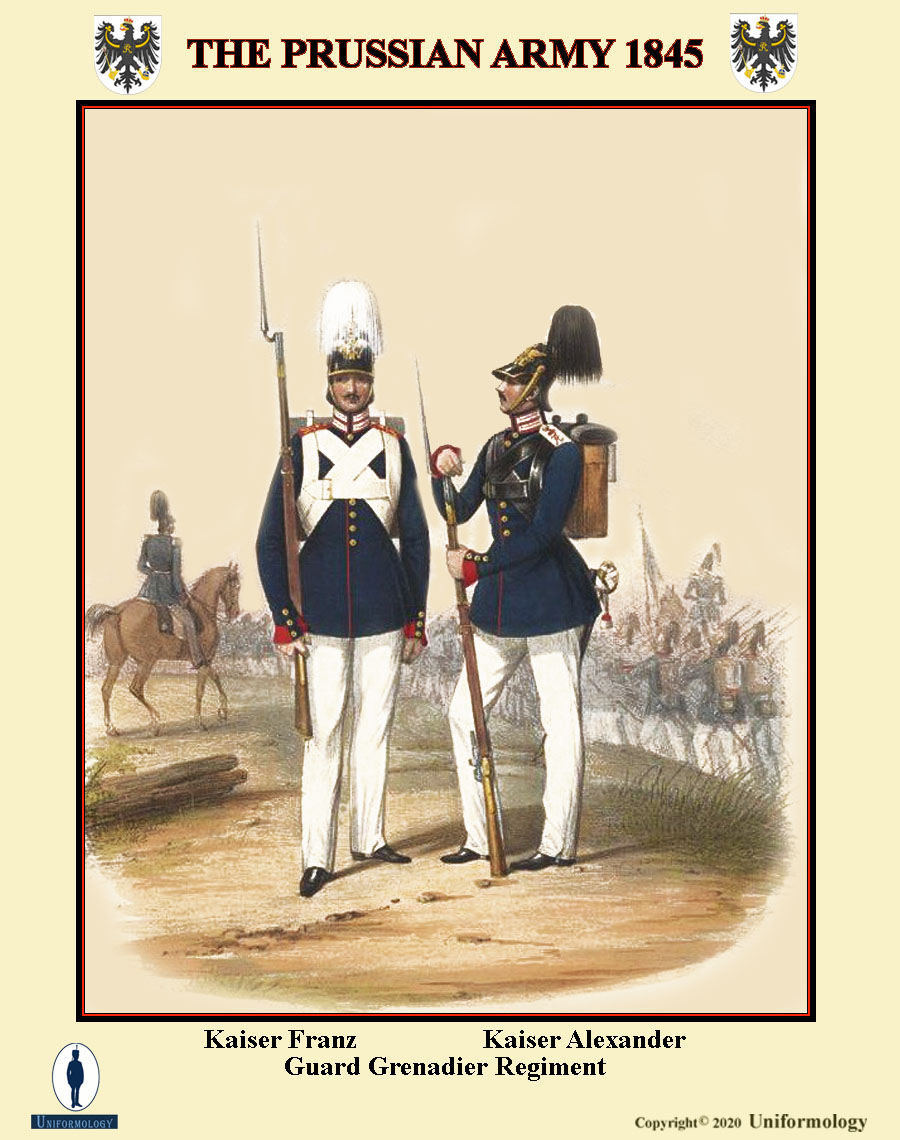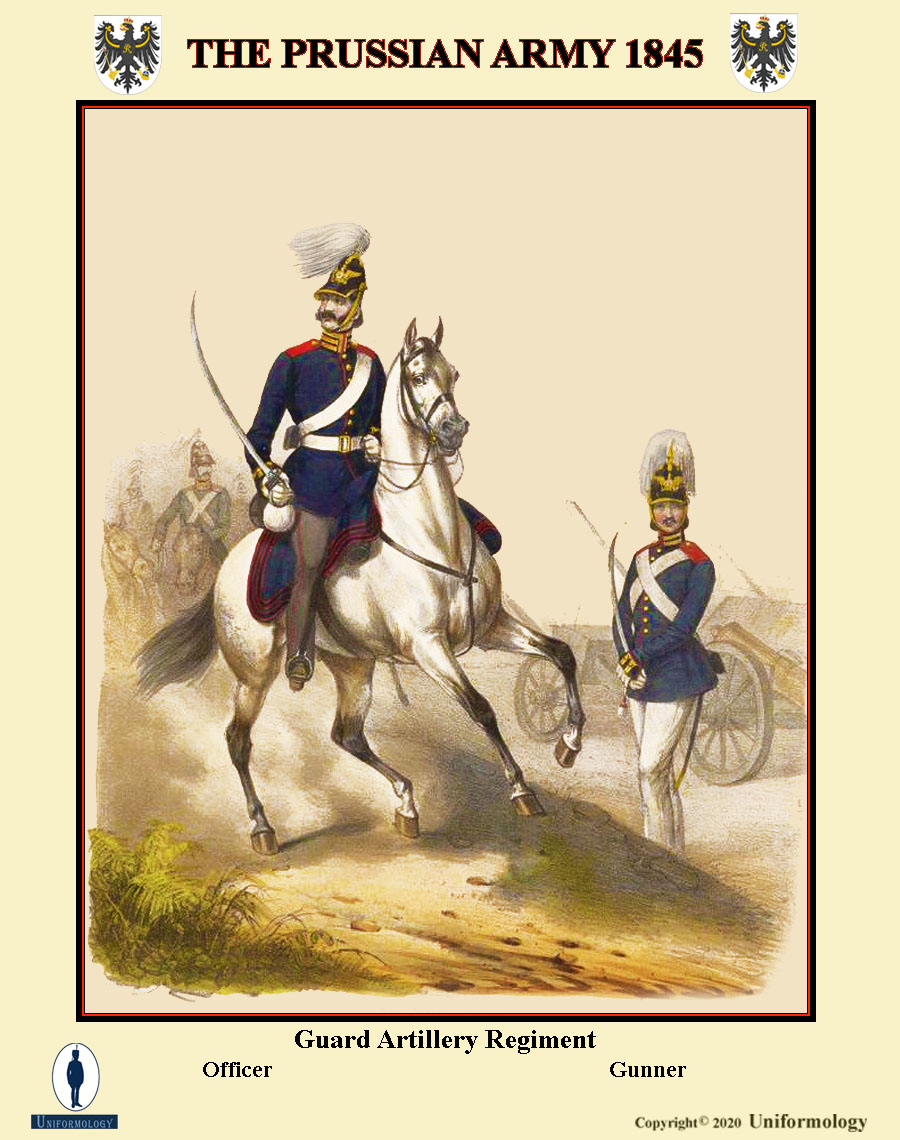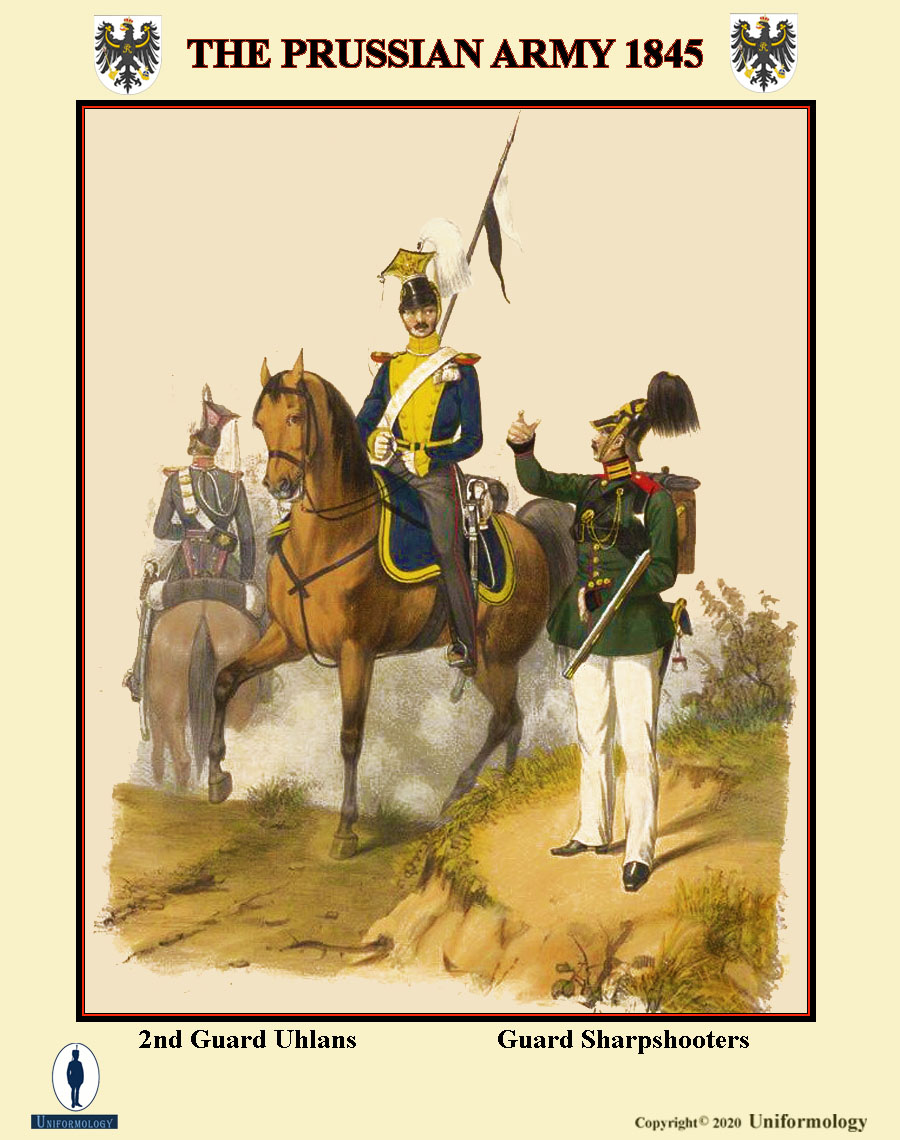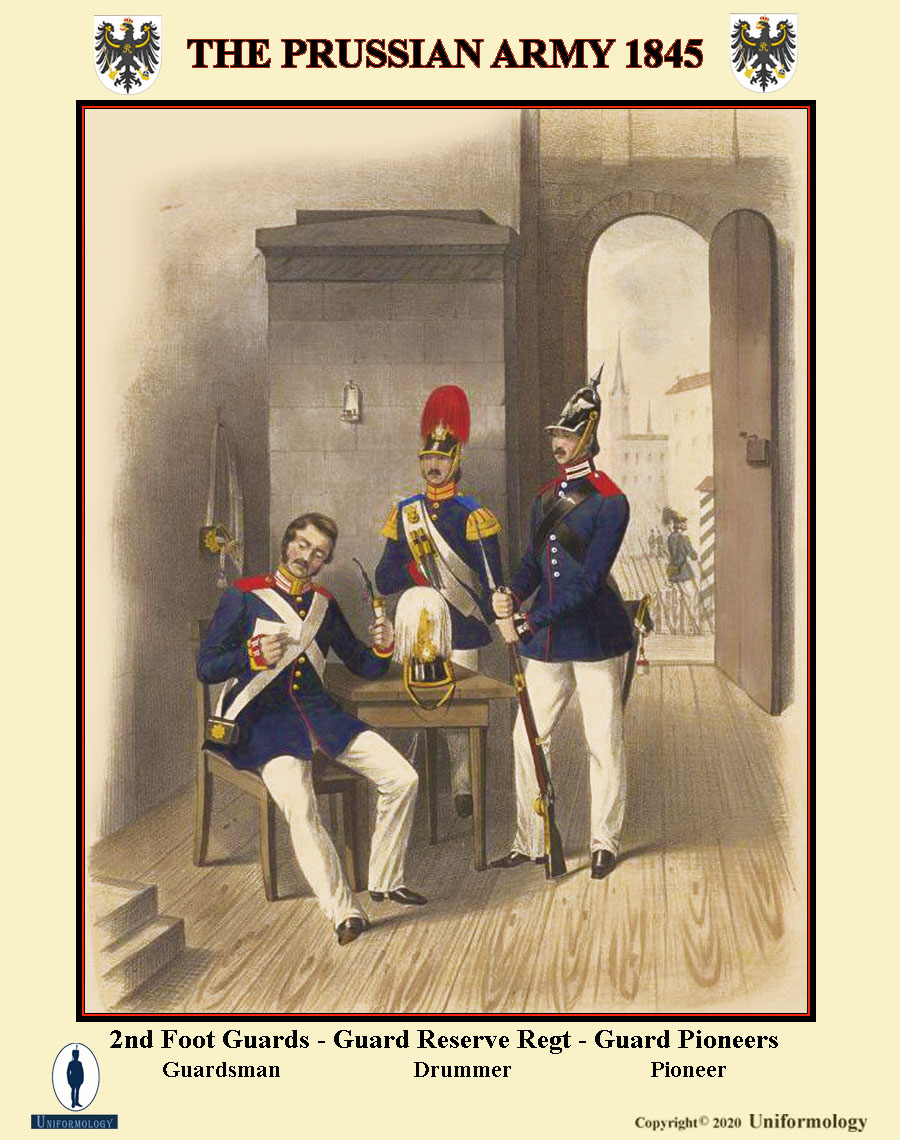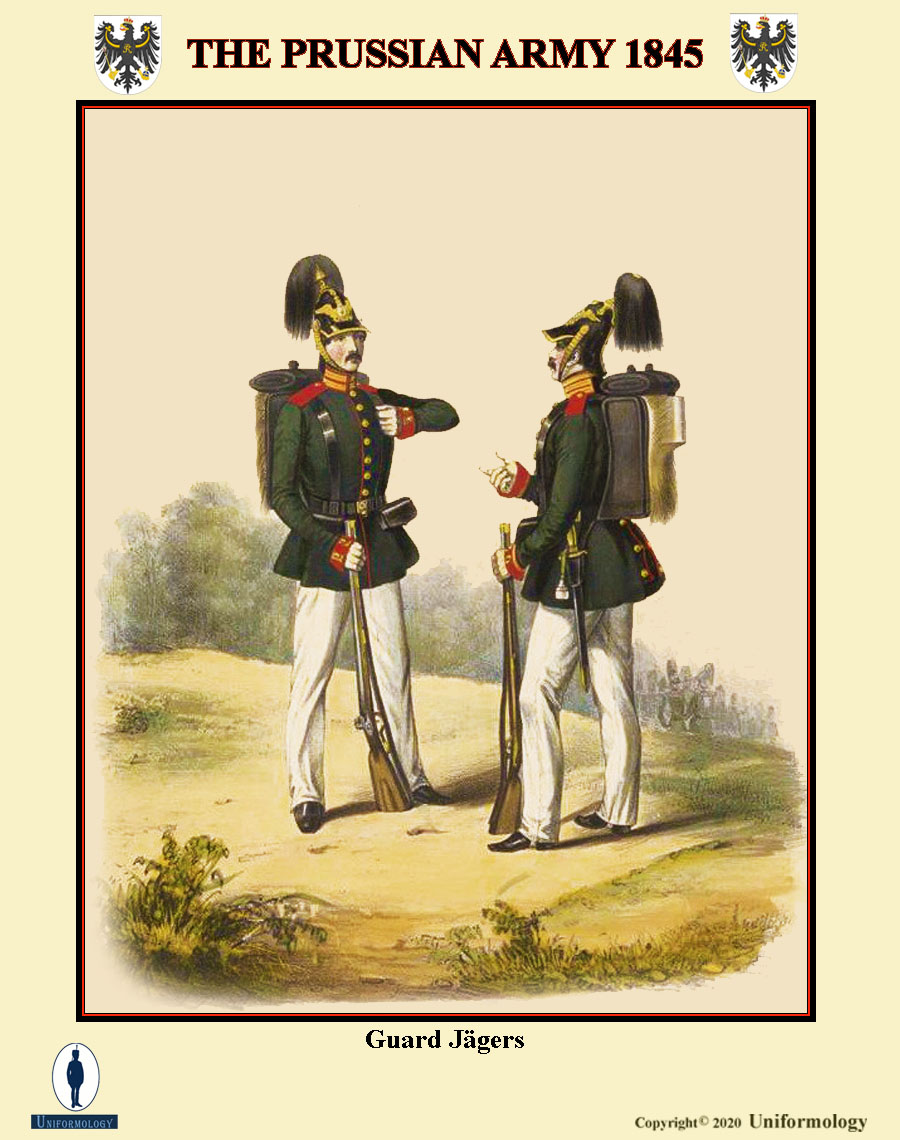THE WORLD OF MILITARY UNIFORMS
1660-1914
THE PRUSSIAN ARMY 1843
By Ludwig Elzholz, Carl Rechlin, Julius Carl Schulz
Page 1
ABOUT THE ARTISTS
Little is known of this group of artists who worked with the lithographers Druck & Sachse AG on several projects involving the uniforms of the Prussian and other German armies. Prior to the one shown here, they had done a study of the Prussian Army of the 1830s. Several of these images were shown in Tradition Magazine of London in the 1970s
THE PRUSSIAN ARMY OF 1843-1850
On 23rd October, 1842, by a Cabinet order (AKO) from the Prussian High Command, a headdress was introduced into the Prussian Army known as the Pickelhaube (Spiked Helmet) which was a dramatic departure from the prevailing shakos, bell topped and tapered that most armies of the time wore. The following year they also introduced the tunic, a simpler and less costly item than the coatee with tails. This uniform would come to influence military fashion for the next seventy years, partly because of its practicality and mostly because the Prussian army came to dominate the armies of Europe on the battlefield.
The first of these uniforms were striking and illustrators rushed to portray them. For the next forty years the uniform would change somewhat but remain largely the same. The helmet was lowered several times and the skirts on the tunic shortened but the profile of a Prussian, later German soldier would be unmistakeable.
The dress adopted in 1843 used the same equipment of crossbelts for the first few years. The artillery, dragoons and most branches wore the tunic. However, it would be ten years before the Hussars and Uhlans took them into wear.
REGIMENTS OF THE LINE

